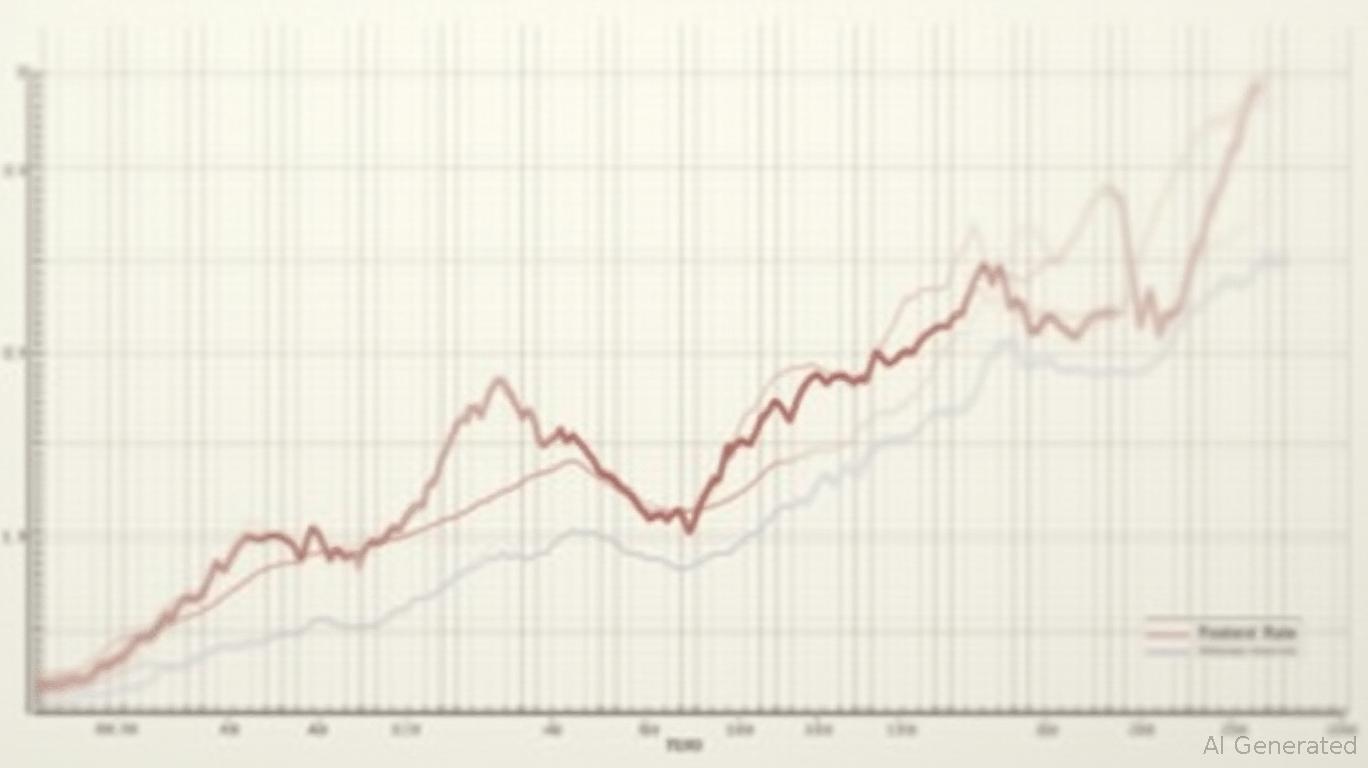The Dovish Fed Chair Gambit: Navigating Markets in a Policy Pivot?
Paul Tudor Jones, the notoriously prescient hedge fund manager, has issued a stark warning: unless President Trump appoints a “dovish” Federal Reserve chair, U.S. equities face a downward spiral to “new lows.” With the Fed's current stance holding interest rates at 4.25–4.5% since December 2023, Jones argues that a shift toward aggressive rate cuts is essential to counteract the drag of Trump's trade tariffs and stabilize markets. This analysis explores how a dovish Fed chair could reshape monetary policy, bond yields, and equity valuations—and how investors might position portfolios to profit.
The Dovish Pivot: A Lifeline for Rates and Markets?
The Federal Reserve's current “wait-and-see” approach, under Chair Jerome Powell, has left markets in limbo. Jones contends that persistent trade tensions—particularly the 145% tariffs on Chinese imports—threaten to slash U.S. economic growth by 2–3 percentage points. A dovish Fed chair, he argues, would likely prioritize growth over inflation, accelerating rate cuts to cushion the economy.

Brian Levitt of
reinforces this view: with inflation averaging 3.1% since mid-2023 and labor markets cooling (evidenced by falling quit rates), the Fed's neutral rate may already be exceeded. Levitt predicts rate cuts by late 2025, citing moderating shelter prices and a “broad-based slowdown.” A dovish chair could amplify this trend, pushing the Fed funds rate below 3% by year-end.Bond Markets: Yield Volatility Ahead
For bond investors, a dovish Fed means a reversal of the yield curve's steepening trend. Treasury yields, which surged to 4.3% in late 2023, could retreat to 3.5% or lower if rate cuts materialize. This would boost bond prices, particularly long-dated maturities like the 10-year Treasury note.
However, the path is fraught with risks. If inflation resurges due to supply-chain disruptions or aggressive fiscal spending, even a dovish Fed might hesitate. The interplay between policy and yields will hinge on data releases: watch the Consumer Price Index (CPI) and nonfarm payrolls closely.
Equities: Rate Sensitivity and Sector Rotation
Lower rates would rekindle growth-oriented sectors like technology (AAPL, MSFT) and consumer discretionary (AMZN), which rely on cheap capital. Conversely, rate-hedged sectors such as utilities (DUK) or real estate (XLRE) could underperform as their defensive appeal wanes.
Jones' bearish outlook assumes a Fed failure to act, but a dovish pivot would likely reverse that narrative. Equity valuations, particularly for high-beta stocks, could expand as discounted cash flows improve. The S&P 500 Equal Weight Index, already trading at a modest premium to its 20-year average, might see further gains if the Fed's stance softens.
Tactical Investment Strategies
- Bond Laddering: Allocate to intermediate-term Treasuries (e.g., TLT) to capture yield declines while avoiding excessive duration risk.
- Sector Rotation: Shift toward rate-sensitive equities like semiconductors (SMH) or cloud infrastructure (CLOU), which benefit from lower borrowing costs.
- Options Trading: Use put spreads on utilities or rate-sensitive ETFs to hedge against inflation surprises.
- Gold as a Hedge: Maintain a 5–10% allocation to gold (GLD) to offset tail risks from geopolitical instability or Fed missteps.
Conclusion: Balancing Hope and Caution
Paul Tudor Jones' dovish Fed chair prediction is more than a market call—it's a stress test for investors. While a rate-cut cycle could lift equities and bonds, the path remains uncertain. Geopolitical risks, fiscal overreach, and stubborn inflation could derail the pivot. Investors should embrace a flexible, data-driven approach: stay overweight equities if yields retreat, but keep hedges in place for volatility. As Jones himself might say, “Hope for the best, but trade for the worst.”
Disclosure: This analysis is for informational purposes only and does not constitute investment advice. Always consult a financial advisor before making decisions.

Comments
No comments yet